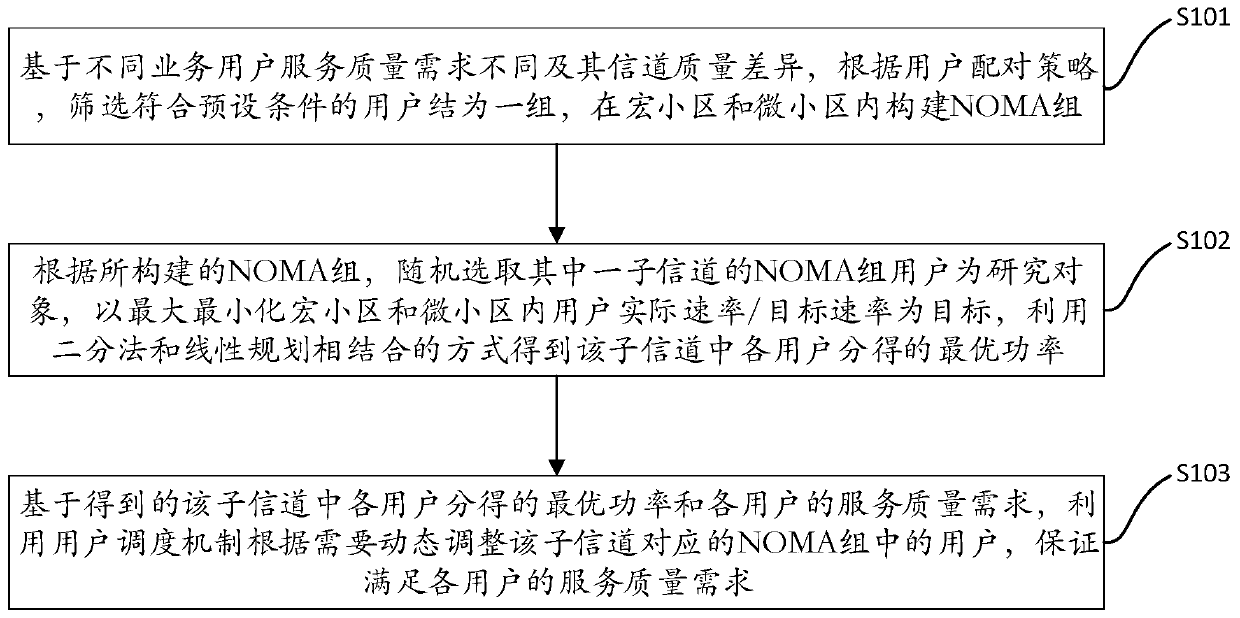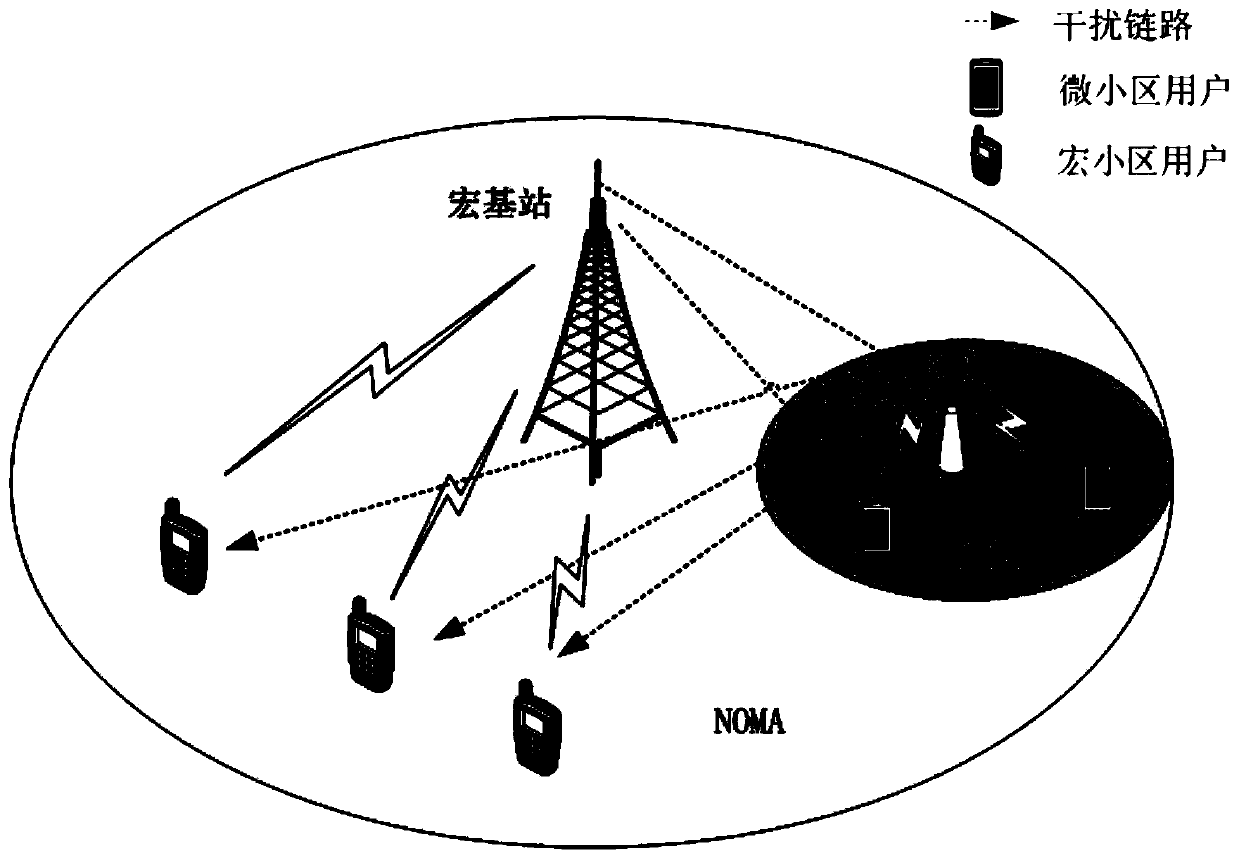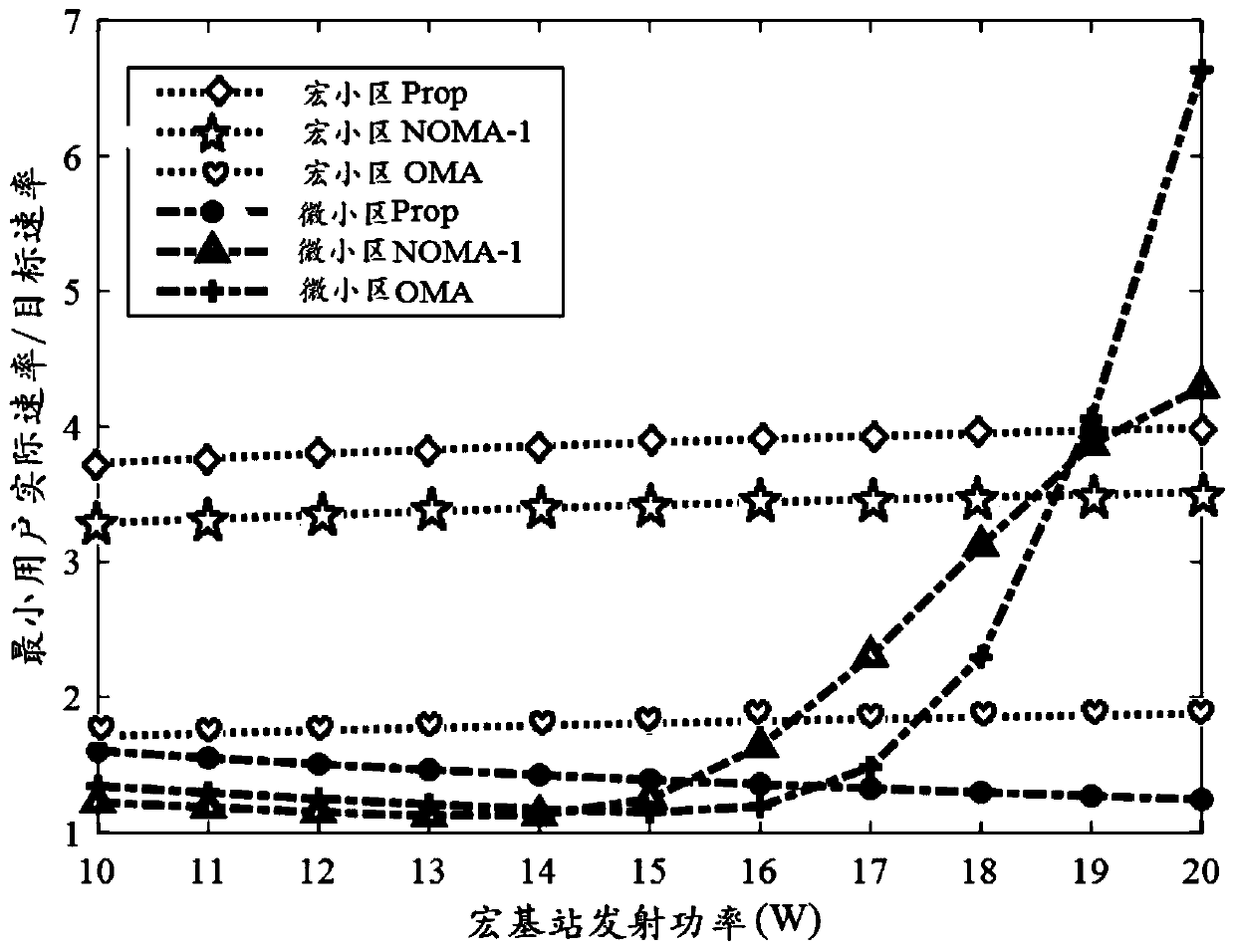A noma cellular heterogeneous network resource allocation method and system
A technology of heterogeneous network and resource allocation, applied in the field of wireless communication, can solve the problem of not meeting the needs of future communication
- Summary
- Abstract
- Description
- Claims
- Application Information
AI Technical Summary
Problems solved by technology
Method used
Image
Examples
no. 1 example
[0052] see figure 1 , this embodiment provides a NOMA cellular heterogeneous network resource allocation method, which improves system user access capabilities under the condition of ensuring user QoS requirements; wherein, the NOMA cellular heterogeneous network scenario described in this embodiment is as follows figure 2 As shown in , the macro cell and the micro cell occupy the same time-frequency resources, and the base station always has information to transmit to the user, that is, a saturated scenario. Cellular users are randomly distributed in the cell, and their channels obey the Rayleigh distribution and are independent of each other. And because the present invention relates to the same time-frequency resources occupied by the macro cell and the micro cell, there are also normal communication links between the macro base station and the macro cell user, and between the micro base station and the micro cell user. Interference links between cell users and between ma...
no. 2 example
[0095] Correspondingly, in order to achieve the above purpose, the present invention also provides a NOMA cellular heterogeneous network resource allocation system in the scenario where the cellular heterogeneous network introduces the NOMA technology, including:
[0096] The NOMA group construction module is used to filter users who meet the preset conditions into a group according to the user pairing strategy based on the different service quality requirements of different service users and the channel quality difference, and build NOMA groups in macro cells and micro cells;
[0097] The optimal power solution module is used to randomly select the NOMA group users of one of the sub-channels according to the constructed NOMA group as the research object, aiming at maximizing and minimizing the actual rate / target rate of users in the macro cell and the micro cell, using binary The optimal power shared by each user in the sub-channel is obtained by combining the method and linea...
PUM
 Login to View More
Login to View More Abstract
Description
Claims
Application Information
 Login to View More
Login to View More - R&D
- Intellectual Property
- Life Sciences
- Materials
- Tech Scout
- Unparalleled Data Quality
- Higher Quality Content
- 60% Fewer Hallucinations
Browse by: Latest US Patents, China's latest patents, Technical Efficacy Thesaurus, Application Domain, Technology Topic, Popular Technical Reports.
© 2025 PatSnap. All rights reserved.Legal|Privacy policy|Modern Slavery Act Transparency Statement|Sitemap|About US| Contact US: help@patsnap.com



